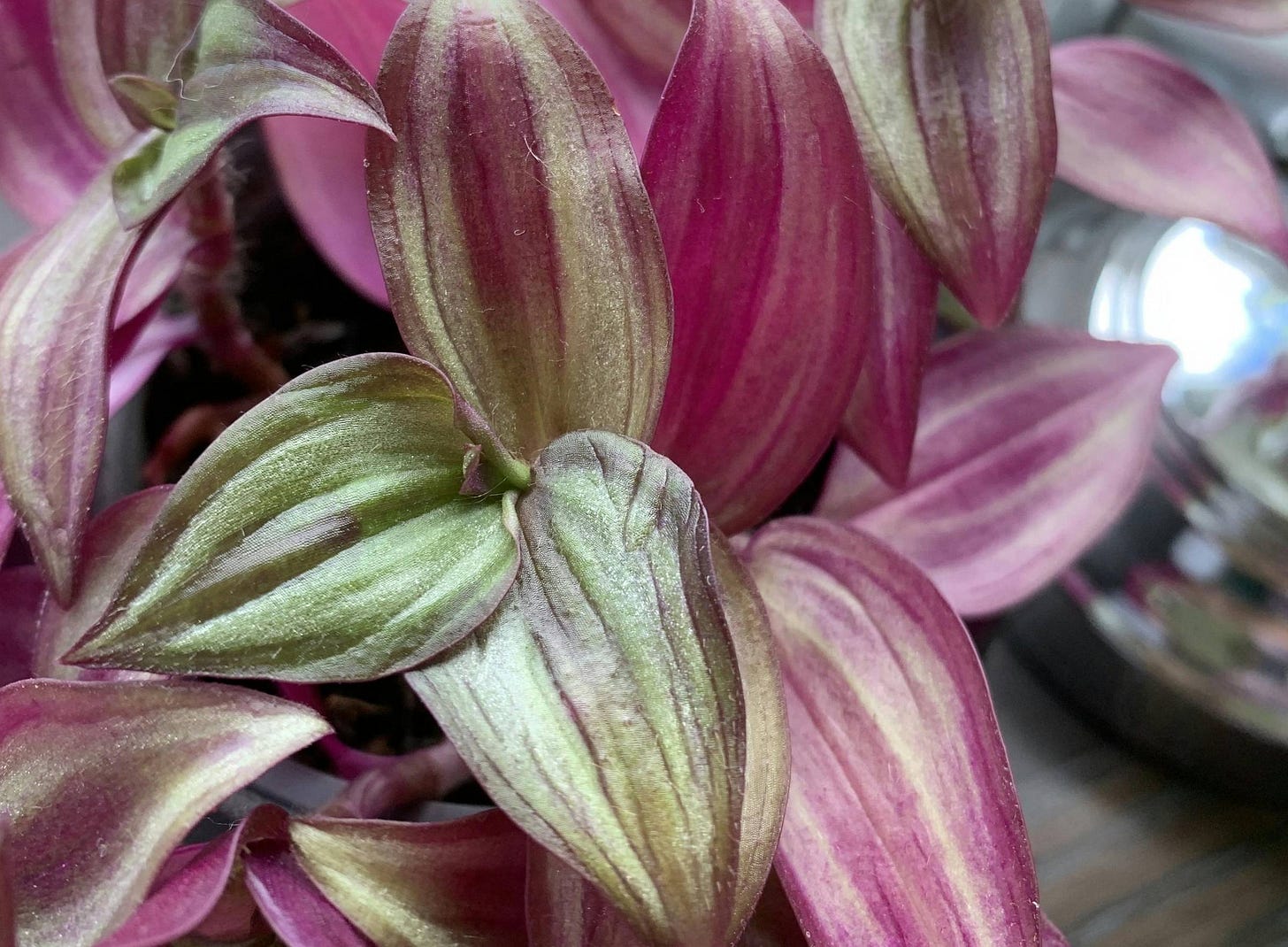Top 5 Tradescantia Care Mistakes and How to Avoid Them
Taking care of Tradescantias is generally pretty straightforward, but every plant parents can make mistakes from time to time. Whether you’re new to Tradescantias or just looking to improve your care routine, knowing what not to do can be just as important as knowing what to do. I see a lot of misleading and confusing care advice out there, so here’s my take on why your Tradescantia might sometimes struggle to live its best life.
Overwatering
Overwatering is one of the most common mistakes when it comes to Tradescantias. They prefer their soil to dry out between waterings. If the soil is constantly wet, it can lead to root rot, which is often fatal for the plant. I often see advice suggesting never to let them dry out and to water when the top inch is dry, which, in my opinion, is why many struggle to keep their Tradescantias alive. These plants have succulent qualities and can store water in their stems and leaves, so the idea that they can’t handle drying out is simply not true.
How to Avoid: Check the soil moisture before watering. Let the soil dry out before you water again. Make sure they’re in pots with drainage holes, and when you do water, fully saturate the soil and let the excess water drain out the bottom. Bottom watering works well too—just let the pot sit in a bowl of water until the soil is fully soaked.
Insufficient Light
I read an article saying that Tradescantias were great for places with low light, like basements and hallways. While Tradescantias can survive low light conditions, they would definitely struggle in such environments. Without enough light, they can become leggy and lose their beautiful colours and variegated varieties, risk losing their variegation. If you want your Tradescantia to look its best, low light situations should be avoided. The usual recommendation is bright indirect light, but I’d go a step further and say that direct light is even better. They might get a bit of sunburn at first, but they’ll quickly adapt and love the brighter conditions.
How to Avoid: Place your Tradescantia near a window where it can receive plenty of sunlight. If you don’t have a place with sufficient light, grow lights are a great option to substitute natural light.
Neglecting Fertilization
Tradescantias need regular feeding, especially during the growing season. Without enough nutrients, you might notice stunted growth, deformed, or pale/yellow leaves. The need for fertilization also depends on the type of soil you use. Regular potting soil typically contains a good amount of nutrients, which means a newly repotted plant can go a while without additional fertilizer. However, if you mix your own soil or use a soilless mix, these often lack nutrients, meaning they need to be added sooner.
How to Avoid: Use a half-strength balanced liquid fertilizer every 4 weeks during the spring and summer, and every 8 weeks during the winter. Be careful not to over-fertilize, as this can cause more harm than good. Overfertilization can lead to salt buildup in the soil, root damage, burned leaf edges, and even slowed growth. If you suspect you’ve over-fertilized, you can try flushing the soil with plenty of water to wash out the excess salts. In more severe cases, repotting your plant in fresh soil might be necessary to prevent further damage. It’s always better to be on the side of caution when it comes to feeding your plants.
Ignoring Signs of Pests
Like all plants, Tradescantias can attract pests, and especially thrips seem to really like them. Catching these pests early can be the difference between saving your plant or having to throw it away. If left untreated, pests can cause serious damage. Common signs are deformed new growth, silvery spots on the leaves, and if you find small black dots within those silvery spots, that’s a sure sign your plant has thrips.
How to Avoid: Regularly check your plants for any signs of pests. If you notice any, quarantine the affected plant immediately and check how bad the infestation is. If it’s only a few affected leaves, removing them and treating the plant with insecticidal soap or neem oil might be enough. However, larger outbreaks might need more action. If most of the plant is affected, I usually take a few healthy cuttings, treat them, and throw away the rest of the plant. Beneficial bugs are also a great option for controlling pests naturally.
Not Pruning Regularly
Tradescantias are naturally crawling plants, so having long stems that only attach to the soil at one point is quite unnatural for them. This can cause problems when the stems get too long to support themselves. Signs of this include brittle stems that break easily and leaves dropping off near the base. Another reason to trim them regularly is to keep your plant looking healthy and full—regular chopping and propping are important for that.
How to Avoid: Regular trimming helps prevent stems from becoming weak and brittle, and by consistently chopping and propping, you’ll make sure your plant stays full and healthy.
By keeping an eye out for these common mistakes, you can keep your Tradescantias happy and looking their best. Remember, plant care is a learning process.
If you ever have any questions or need more advice, feel free to reach out—I’m always here to help! Don’t forget to subscribe so you never miss out on future newsletters.
Thanks for reading, and happy planting!
Katja






